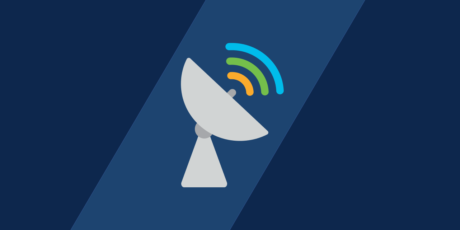
Getting started: Satellite Essentials for Smart Licensing
Cisco’s licensing method went through an incredible transformation over the last few years. Before this shift, the established way to license the network devices was using the traditional method – called ‘Traditional Licensing’ (TL).
Although in decline, TL is still being used by a fair number of customers while a new licensing method, called ‘Smart Licensing (SL)’, is on the rise and currently being adopted by a considerable percentage of the total user base. Despite having two methods present simultaneously, networks are migrating to Smart Licensing (SL) throughout the time.
Smart Licensing consists of a Hypertext Transfer Protocol (HTTP) based communication concept that facilitates system administrator’s managing tasks. Instead of using physical files (TL method), SL provides a platform on the internet where the devices will independently connect to in order to manage their own licenses, promoting a simple and modern approach. Each customer will need to create a smart account (SA), containing all the smart licenses.
The architecture is composed of two mandatory entities and an optional tool:
- Device(s): It represents the devices configured in the network. They can be routers/switches, servers, wireless controllers, firewalls … These will be the ones that will need to be licensed.
- Cisco Smart Software Manager (CSSM): Also treated as ‘cloud’ or ‘smart portal’, this is an online platform that will mainly provide the capability of:
- Organizing the licenses
- Conveying the requested licenses by the devices, authorizing them to compliantly work
- Automatically converting licenses from TL to SL
- Smart Software Manager On-Prem (SSM On-Prem): Also known as ‘satellite‘, is a local graphical interface-based tool that will essentially perform the job of a reverse proxy. It will gather the license-related information from the devices and will deliver it to the cloud, without requiring internet connectivity in the end-equipment. This component is optional.
The vast majority of devices will contain a specific set of commands or web page, depending on if it is a Command Line Interface (CLI) or Graphical User Interface (GUI) based, to configure the smart licensing settings. By default, the cloud (CSSM) is the chosen end-target. Taking into account all SL capable devices, not all support the satellite method. That small group will eventually include it in a near future, based on the impact of SL so far. Referred in the link section (end of the document).
On the other hand, the ones that are capable of interacting with the SSM On-Prem can change their target. It differs between platforms, however, there is official documentation explaining where to find it and how to do it.
Here are the factors that should be considered when deciding if the satellite is applicable in each scenario:
- Number of devices in the network: There is no minimum number of devices required for the satellite to work. The tool might be useful when there is a considerable number of devices in the network. The word “considerable” is subjective, so it is up to each network administrator to decide the right number. Having the satellite will reduce the communication to the cloud from “X” (being “X” the number of devices) to 1.
- The reachability of the devices: If the device does not have access to the internet, the satellite becomes mandatory. As stated previously, the SSM On-prem is local, meaning the devices are directly connected to it. They won’t know that the cloud exists, seeing the satellite as the only endpoint. The satellite will take care of the communication with the “outside world”.
Apart from the above situations (mainly the 2nd), the devices can communicate directly with the cloud.
Regarding the features, the satellite essentially offers what the cloud does. Despite the fact that the satellite appears to take action, it is important to note that it won’t do or decide anything, it will just pass information between the 2 extremes. Those features include:
- Device registration: The devices will need to register themselves in order to obtain the licenses. The satellite will be their target.
- Device authorization: After the registration, the devices will keep periodic communication with the satellite to renew their authorization (which will provide the ability to work).
- License conversion (traditional -> smart): Using the Device-Led Conversion feature, the traditional licenses of the devices can be automatically converted to smart. The device just needs to be registered in the satellite.
- Alert display: Alerts will be shown in the GUI (or email notification), in case something goes wrong (e.g. a device cannot renew the authorization).
The main goal of this article was to superficially describe the concept of Smart Licensing and how the satellite helps to achieve a network configured with that mechanism. For further detailed information about either of them, you can check the following official Cisco Documents:
- Smart licensing enabled platforms
- Smart Licensing data sheet
- Satellite data sheet
- Smart Software Manager overview
- Smart Accounts Overview
- Satellite’s user guide of the latest version (8-202010)
Tags:



